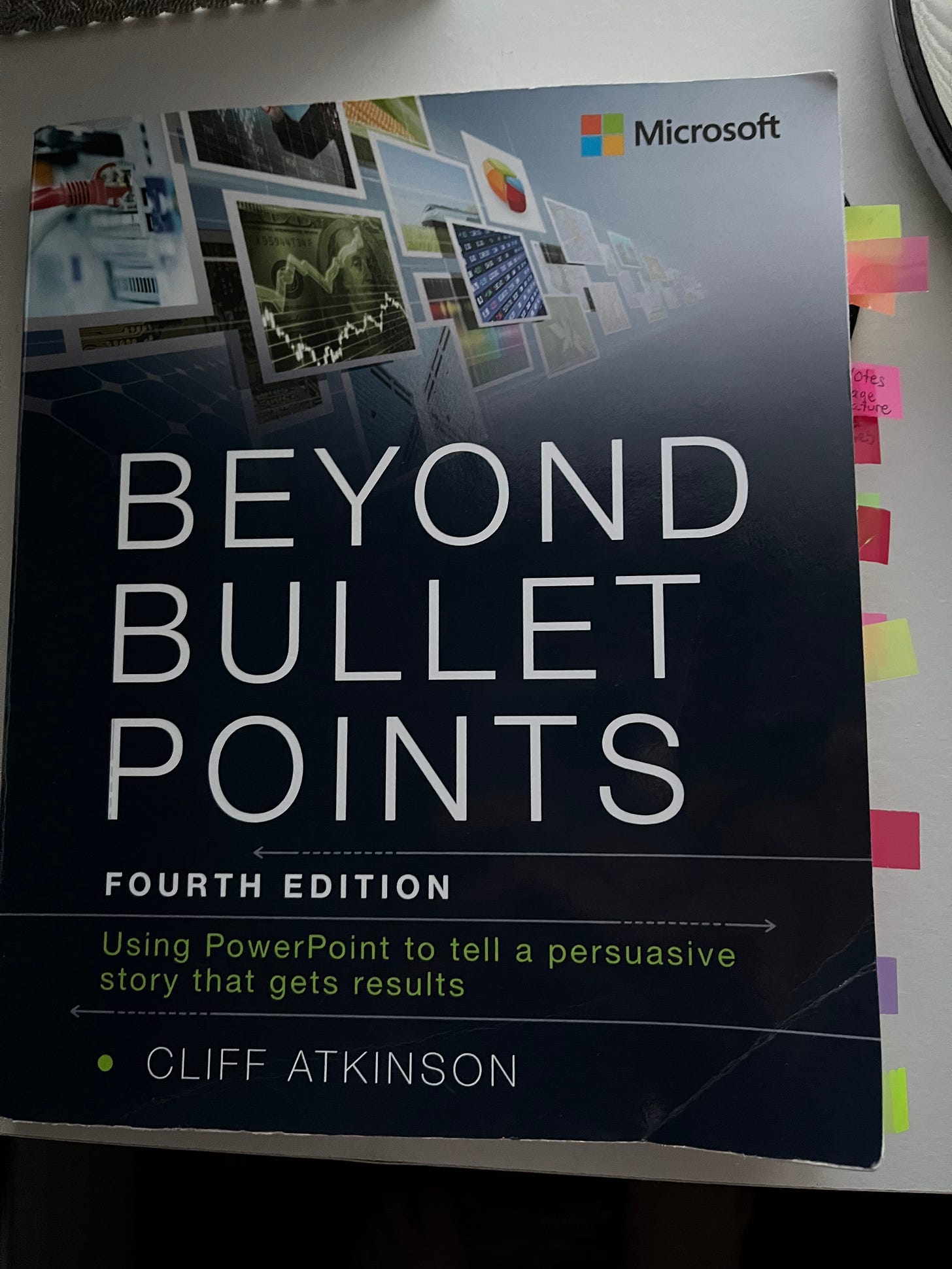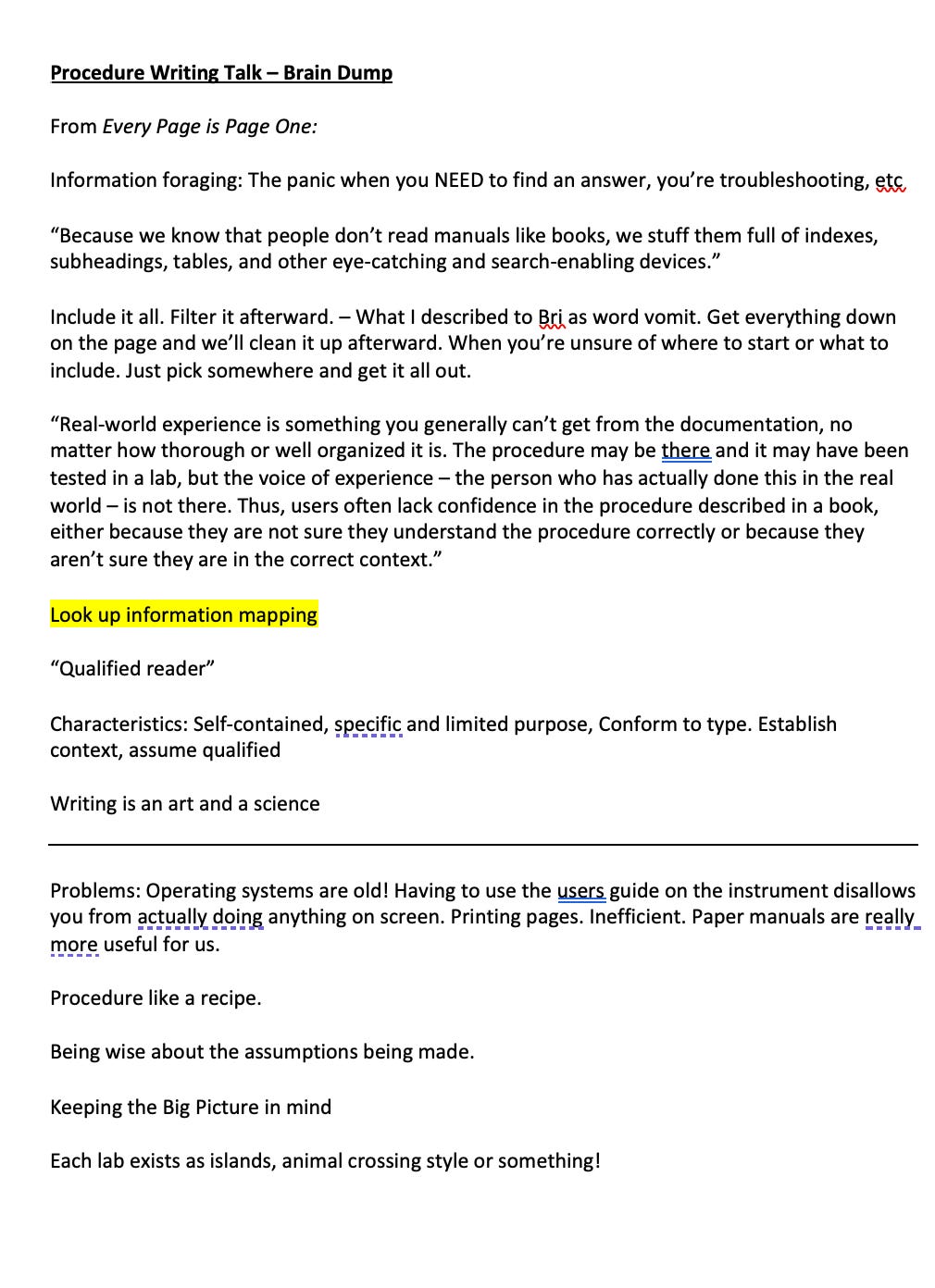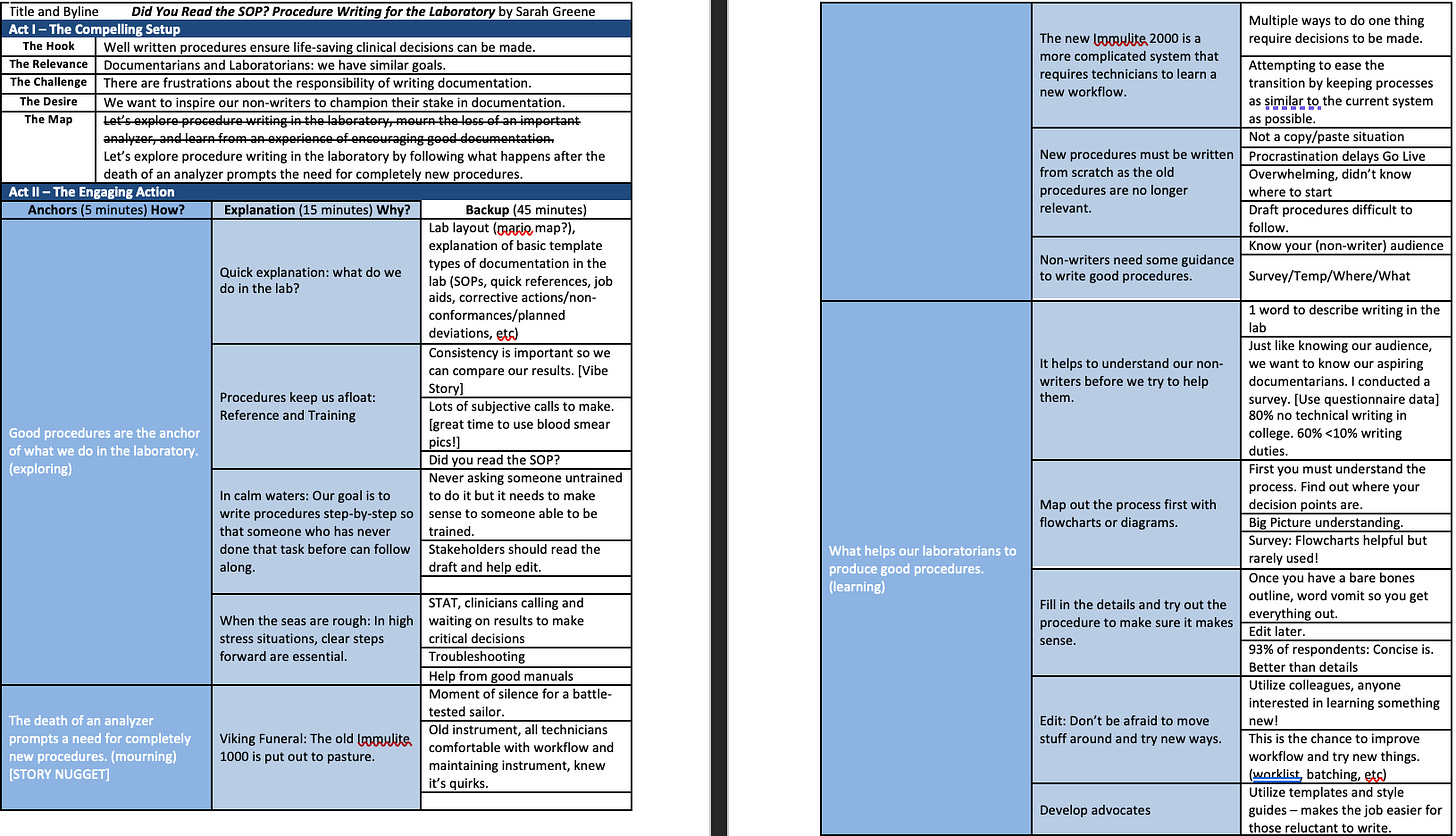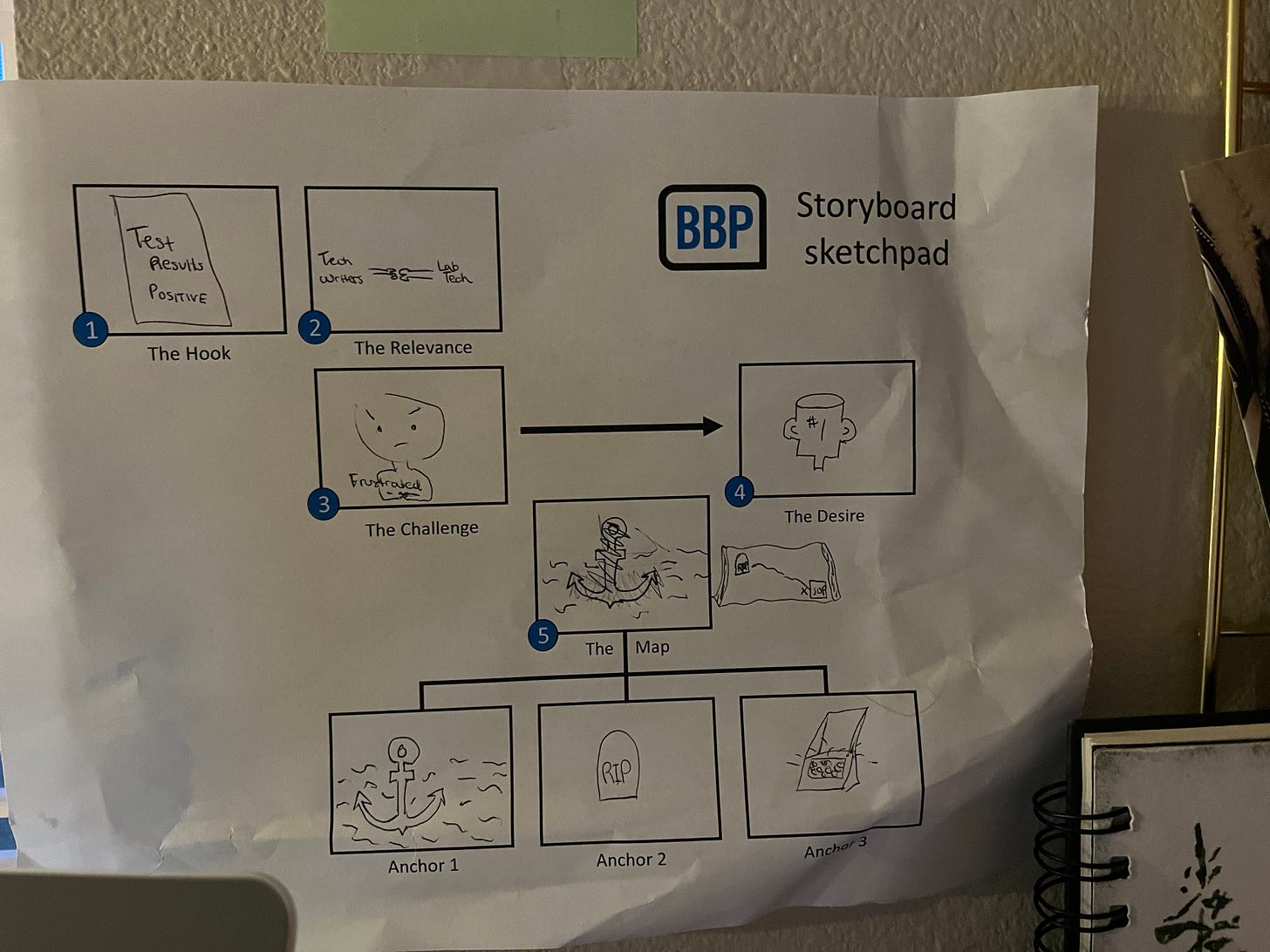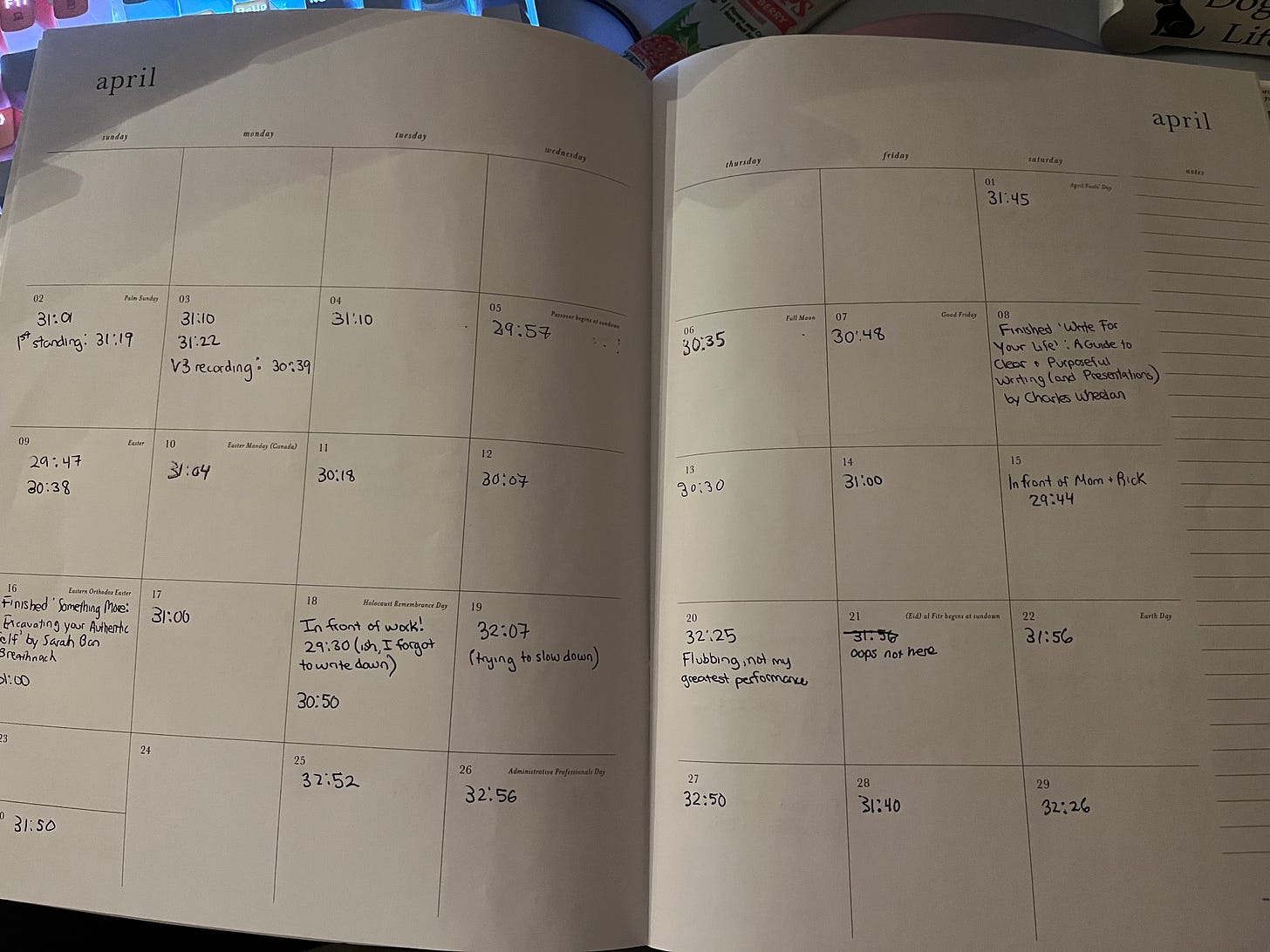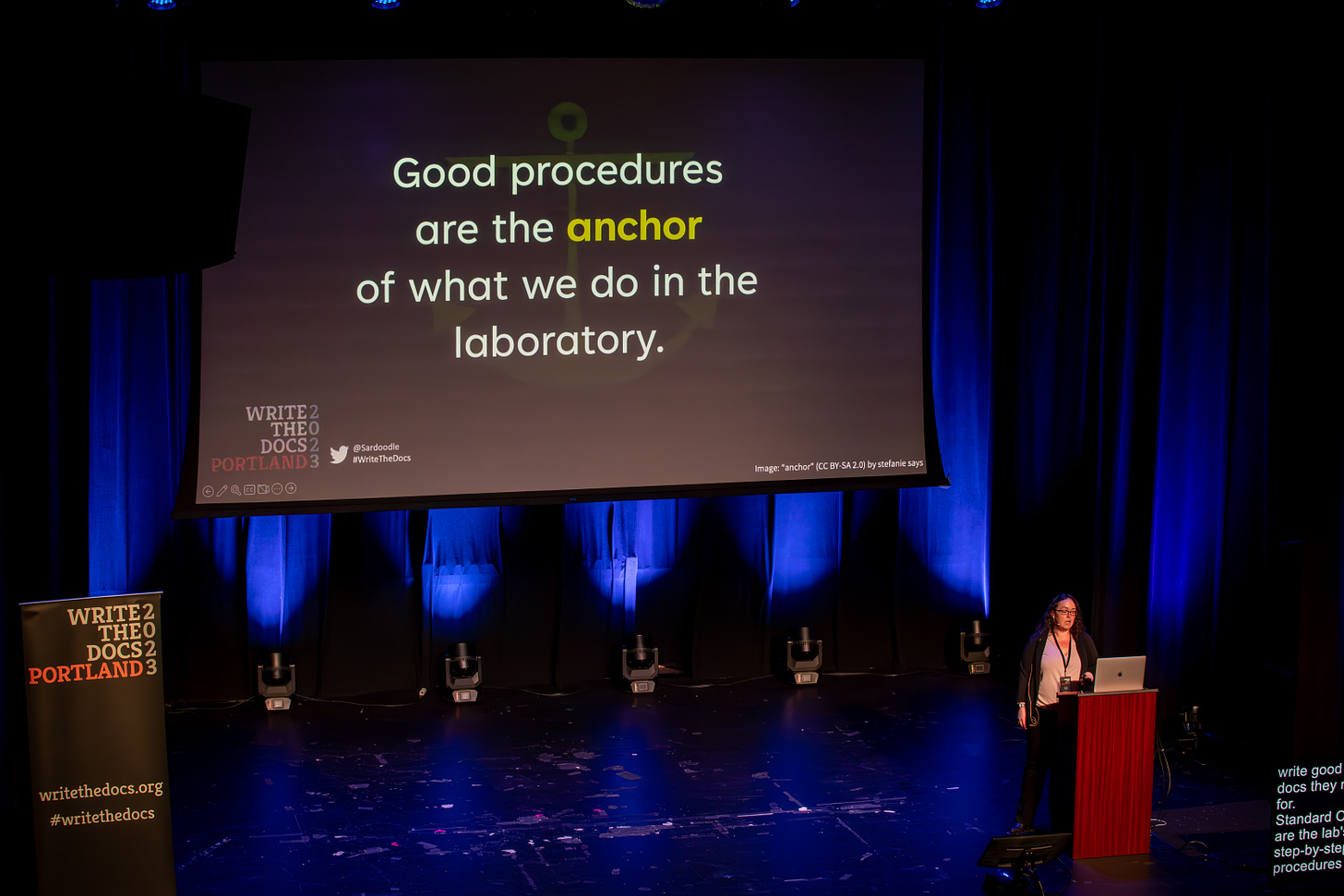Public Speaking for the Terrified...errr, Passionate First Timer
Overcoming a real fear in three months.
I remember the first time I had to speak in front of others. It was terrifying.
In front of my 7th grade classmates, I demonstrated a procedural (how apropos) How To….Bake a Cake. I mixed my dry ingredients, I mixed my wet ingredients - hands shaking just as much as my voice. It was very intimidating, as a shy kid, to have twenty classmates stare me down. My heart racing as I fumbled through the recipe, I was trying to rush through to get out of this embarrassing and painful experience.
Throughout ten more years of school, more panicked speeches, and public speaking never became easier for me. I avoided it at all costs.
As an adult, I’ve never really been in a position that public speaking was an opportunity. I am quiet, I tend to only speak up when I absolutely have to. I told a co-worker I don’t like to speak for 30 seconds, never mind 30 minutes! And yet, I signed myself up to give a 30-minute talk at a technical writing conference.
So how did I get there?
Let me explain.
I have long struggled to find my passion. Tech writing has been my outlet.
I found my calling when it came to writing and editing procedures. Most lab folks hate it. I found it to be the one avenue that I enjoy and look forward to in the daily lab grind.
I went to Write The Docs Portland 2019 (under the radar, without mentioning it at work) and was profoundly inspired by the tech writers I met and listened to. I started to take on more writing at work, as well as mentoring other lab folks who needed help writing docs.
Fast forward to November 2022, I went to a work conference where I was among another set of professionals who were speaking and sharing their work. It was, again, inspiring. When I heard a former lab tech speak about employee retention in the lab (spoiler: Morale is low everywhere, good luck), it hit me: If he can do this, I could do this.
Half delusion, half ambition. The perfect mix to have the courage to push yourself forward.
I had a half-baked idea to talk about procedure writing that I had been mulling around for awhile.
I did not plan to submit a talk proposal. In fact, in an uncharacteristic move for me, I submitted the proposal last minute, hours before the deadline.
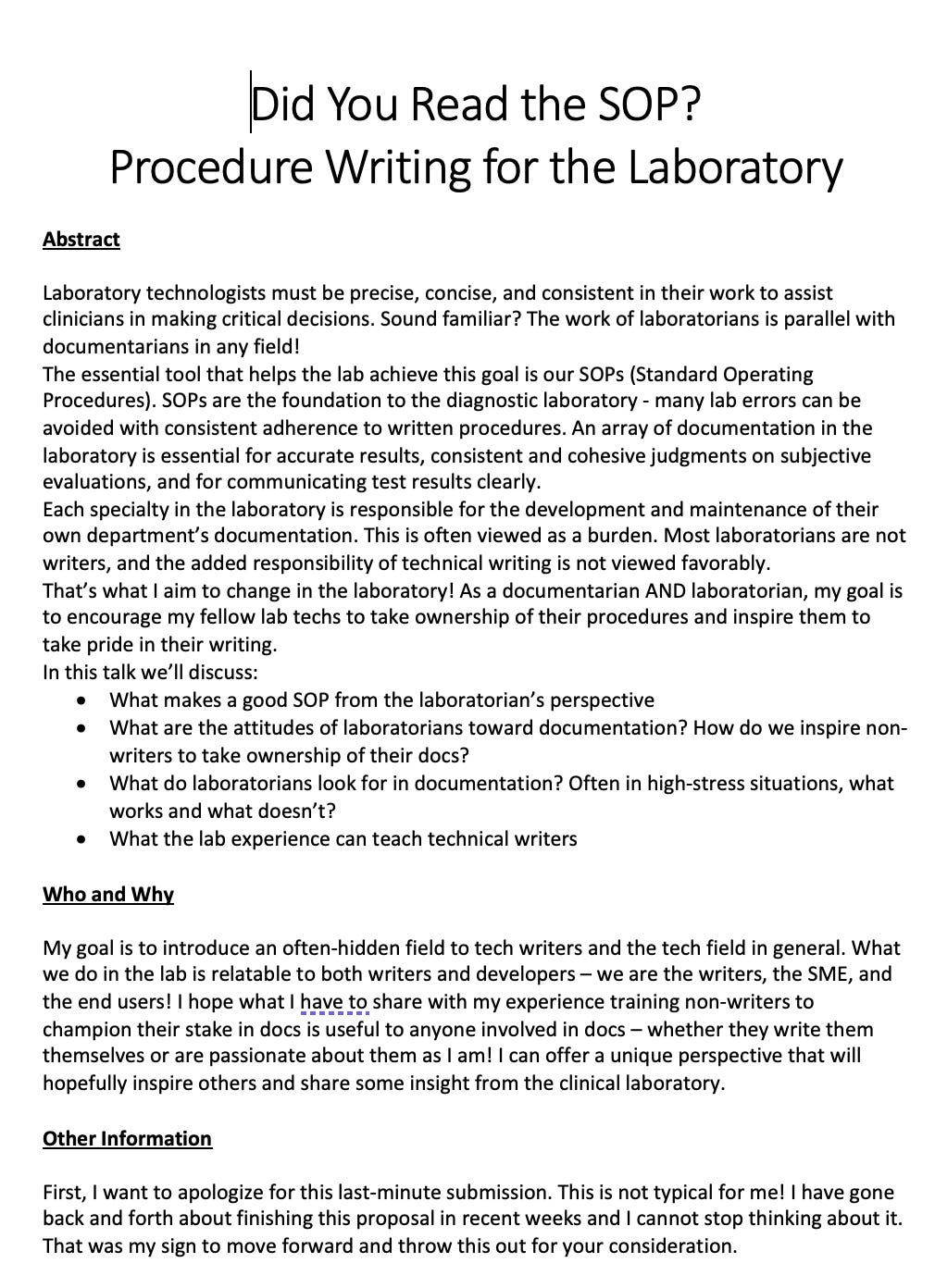
For the following three days, I woke up wanting to withdraw the proposal.
I’m not a public speaker.
This is a dumb idea.
Nobody will be interested.
I am too scared to go through with this.
Withdraw the proposal, save yourself the embarrassment.
I told myself, every morning, to wait until 10am. If I still felt awful, I would withdraw. Sure enough, by the time 10am rolled around, I felt okay.
Timeline-wise: I submitted on a Monday night. I got the acceptance email Friday morning. I wasn’t expecting to hear back until Monday so this was a shock!
I went into hyper-drive. I had three months to prepare. Over-preparing was my strategy for managing the anxiety (okay, maybe terror) that was looming over me. I wanted to memorize my talk, in an effort to minimize what I had to panic about. I was willing to sacrifice sounding natural to ensure I knew exactly what I was supposed to say. That might not be the best advice but the idea gave me comfort. In the end, I did not have it memorized.
I immediately put together my plan.
1.) Research & Development Phase: ~ 6 weeks
I read the Write the Docs Speaker Tips page . An Introvert's Guide to Better Presentations was how I developed my plan and that article made me feel like I could actually pull this off. As you’ll see, I followed his advice very closely.
The first thing I did was order Beyond Bullet Points by Cliff Atkinson. I KNEW I didn’t want a boring PowerPoint. I KNEW I had to do something different. I thought the idea of storyboarding a talk was right up my alley and would be fun. I absolutely would do this again.
I love brain dumps. I started thinking of a larger narrative but needed to just get some ideas down on the page.
Following BBP (and, well, my own advice) I outlined the talk.
Building the visual aspect was the hardest part. I haven’t used PowerPoint since college. Even using the BBP template, it took me untold hours to build the PP. All of this was done after work, on my own time, and mostly on weekends. I remember one Sunday spending 10 hours working on just the slides.
Finding copyright-free images was difficult. Especially trying to stick to my nautical theme. But there are a ton of resources online and it just took a lot of time and patience to find what I needed.
Six weeks after the proposal was accepted, my talk was written and my PowerPoint was complete. Practice runs started the same day.
2.) Practice Like Hell Phase: ~ 6 weeks
My goal was to rehearse my talk every single day. According to my calendar, I missed 7 days. I was eating, sleeping, and breathing my talk. It truly consumed my life.
I timed myself, noting the difference between sitting at my computer versus standing in my living room. My very first read-through: 28 minutes and 42 seconds. Very very close to the 30-minute window. How did I manage that? Luck, to be honest.
I recorded a voice note so I could listen to myself while driving, walking, and getting ready for work. There are three versions, as I adjusted it over time.
My first practice run in front of an audience was to my mom and step-dad. My step-dad fell asleep. And I was a mess. Three weeks into rehearsals, I thought I would have a better handle on it. But I was rushing through, voice shaking, and I did NOT feel confident. If I can’t get it together in front of my own family, how am I going to do it in front of hundreds of strangers?!
I did a practice run at work. I agreed to do this so that I could test the tech (my laptop setup and get a feel for presenting in a lecture hall with the slides behind me). I was adamant that this was not work-related and they were not the audience for this talk. More on evaluating feedback later. :)
Finally, I did not practice for the three days leading up to it. I was as prepared as I could possibly be. Most people probably think 6 weeks of rehearsals is crazy but it’s what worked for me and having lots of time calmed my anxious brain.
Tips for the anxious speaker
Start earlier than you think you should. If you’re starting from scratch, like me, I think 3 months was perfect. Any more would be a waste and any less would have made my life worse. But I did spend an insane amount of time working on this.
Identify your inspiration and do your research. Read books, watch conference talks, ask for help. I relied heavily on BBP and previous WTD talks.
Don’t be afraid to take risks. The criticism I received: Slides didn’t have anything to read (a very intentional choice), lack of data, “too much like a TED talk”, the joke at the end only makes sense to a certain age group, people won’t get the video game references. Which leads me to the next tip….
Make it authentically you. I cannot stress this enough. You will be more confident if your talk is YOU. Know your audience (clearly, I would not make a Backstreet Boys reference to the undergraduate students I spoke to a few weeks later). You will enjoy yourself if you include stuff that you like and your audience will connect with you when you show some personality.
Evaluate where feedback comes from and take it with a grain of salt. I’m serious. If you’re taking risks not everyone is going to like it. And that’s okay! Consider the context of the feedback. Academics, who spend their professional careers giving a very particular type of presentation, don’t often think outside the box. Of course they aren’t going to like a talk that is meant to be fun and is written for a completely different audience. I let some feedback after my work practice run shake my confidence. Had I taken that advice and completely changed my talk, my slides, and my approach in general, it would not have been as successful. Guaranteed.
What I would do different
Seek feedback from the intended audience. This was an unfortunate consequence of a lack of connections.
Disregard the poo-poo’ers. I knew deep down I was doing the right talk for the right audience.
Less slides. Having to remember where to click and when can be disorienting. I would have less animations (words appearing one at a time was unnecessary but it did slow my pace down!)
A better title. If I didn’t rush the proposal, I would have really put more time into that. It was a working title that got stuck. Honestly…it was a joke, a former supervisor used to say “Did you read the SOP?” all the time and the answer was always: yes, of course. I really didn’t intend to run with that!
What I would do again
Absolutely follow BBP again. I enjoyed the story-boarding process and it forced me to really think of what I was trying to communicate to my audience.
Plan ahead and give myself plenty of time for both phases.
Practice until I’m sick of it - that was absolutely worth the time investment. I stood on stage, scared, but not scared that I didn’t know what to say! This was proof that if you practice enough, you can do things that terrify you.
Stick to my guns and be my authentic self.
Speak again…..to a friendly audience! Work? No. Tech writers? Absolutely!
I‘m extremely proud of my talk at Write the Docs. The feedback I received right after was overwhelmingly positive. I even received the opportunity to be a guest lecturer at my alma mater, Portland State University, thanks to my talk! I spoke to a Technical Writing class about the importance of writing in STEM and gave a modified version of Did You Read the SOP to the students, a couple weeks after my talk at WTD.
I truly hope my experience can help anxious speakers find the courage to present their passion on a stage. It’s cliche but true: If I can do it, you can too!
Here is the fruit of my work:
As always, please reach out with feedback. I am always happy to hear from anyone who willingly sits through a 30 minute talk on procedure writing!
Appendix
There is probably a zero percent chance anyone is interested in this but I’ll leave the pdfs with my notes included (it’s written word-for-word, okay) of both Did You Read the SOP? and Procedure Writing: A Real-World Application in the Diagnostic Laboratory. It’s a great example that the BBP format is incredibly useful for transforming a presentation to fit two completely different audiences.




